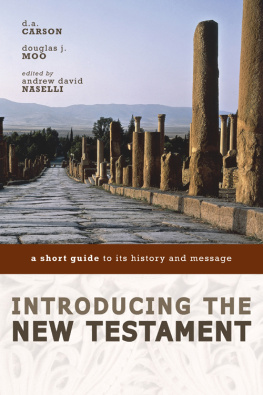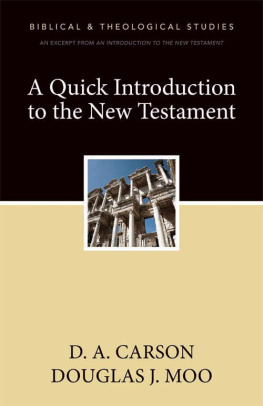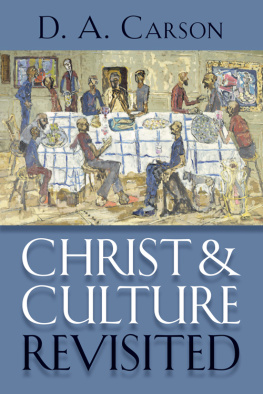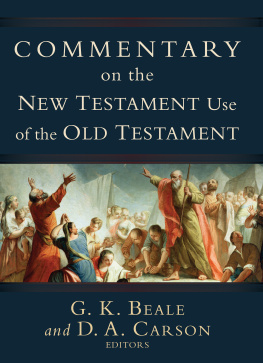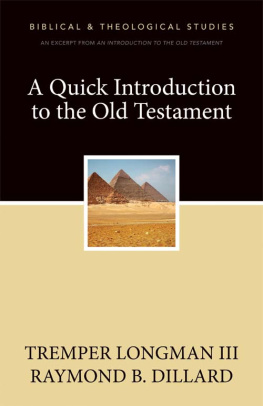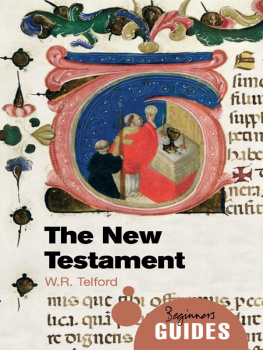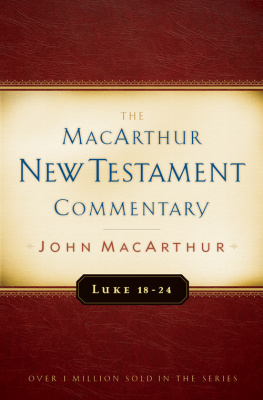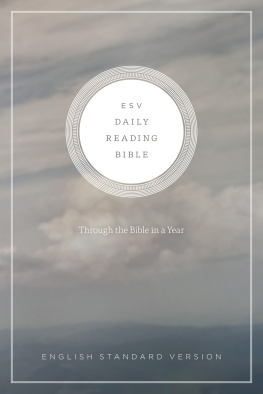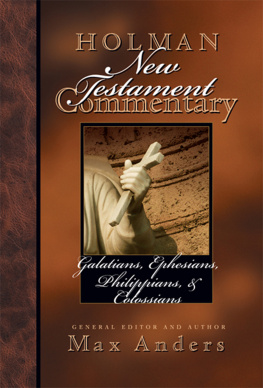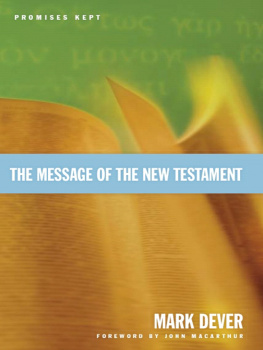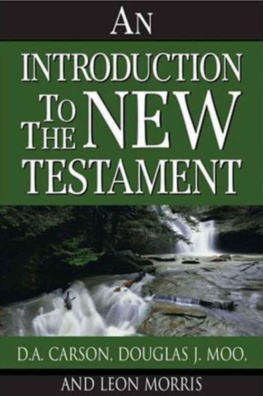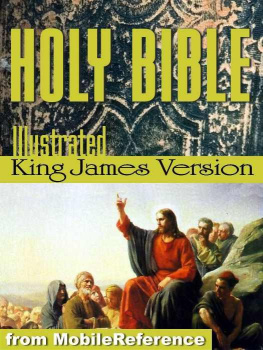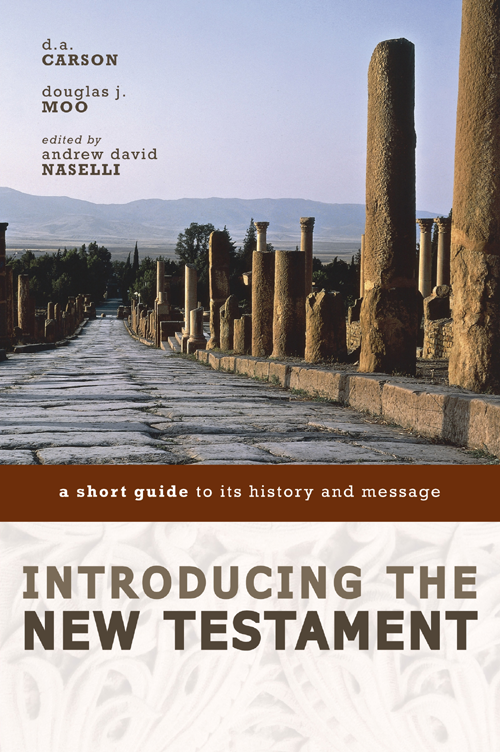You are probably using this book because you are convinced that the Bible is Gods Wordand, just for that reason, you are keen to understand it better. But, of course, God has chosen to reveal his Word to us in human wordswords written by particular people, in particular situations, to particular people, and about particular problems and issues. Knowing about these particulars helps us to understand just what God in his Word is seeking to tell us. In this book, we outline the circumstances in which Gods New Testament Word was written in order to help you understand, appreciate, and live out that Word.
Few of you will read this book at one time from cover to cover. It is a reference book, one that you will want to consult as you read or teach portions of the New Testament. Each book (or, in some cases, a group of books) of the New Testament is profiled in its own chapter. These chapters provide a quick and readable overview of the circumstances in which the book was written, along with an outline of its contents. Other chapters address general topics that arise from a group of New Testament booksthe Synoptic Gospels, the letters of the New Testament, the Apostle Paul. We especially encourage you to read, before turning to particular sections in the book, the opening chapter on Thinking about the Study of the New Testament. This chapter will provide an important orientation for what we say in the rest of the book.
This volume is a condensation of a longer and more detailed treatment of these same issues: An Introduction to the New Testament (D. A. Carson and Douglas J. Moo [2d ed.; Grand Rapids: Zondervan, 2005]). We encourage you to consult this longer treatment if you want to go more deeply into any of the issues we cover in this volume. Nevertheless, we are very grateful for the opportunity to put this larger work into a form that can be used by a wider audience. Andy Naselli did a remarkable job of providing an initial draft of this condensation, and we (Don and Doug) are very grateful for his careful work. All three of us hope and pray that as you learn more about the New Testament, you will come to know better and love more dearly the One whom the New Testament speaks of on its every page.
To God be the glory.
D. A. Carson
Douglas J. Moo
Andrew David Naselli
People have been reading and studying the New Testament (NT) for as long as its documents have been in existence. Even before all twenty-seven NT books were written, some found the interpretation of the available documents more than a little challenging (see 2 Pet. 3:1516 on Paul). A distance of two millennia and changes of language, culture, and history have not made the task any less difficult. Furthermore, the overabundance of writings on the NT across the centuries makes the task both easier and harder. It is easier because there are many good guides, and it is harder because the sheer volume and thoroughly mixed nature of the material are profoundly daunting.
About This Book
This book aims to serve you as an introductory guide to understanding the NT. Its layout is straightforward, following the order of the NT books as they occur in our English Bibles. Chapters 2, 8, and 9 introduce groups of NT books, and the rest of the chapters discuss individual NT books, typically answering the following questions (though not always in this order):
1. Content: What is the book about?
2. Author: Who wrote the book?
3. Genre: What style of literature is used?
4. Date: When was the book written?
5. Place: Where was the book written?
6. Audience: To whom was the book written?
7. Purpose: Why was the book written?
8. Contributions: What does the book contribute to our understanding of the faith?
Most of the space in the chapters is dedicated to content and contributions. We suggest that you read this book with an open Bible, perhaps reading each NT book in its entirety as you work through the opening section on its content. The many headings and numbered lists make the material user-friendly with easy-to-find summaries of key points.
Each chapter ends by asking some questions for review and discussion and listing recommended resources for further reading. Below are some general resources that may aid you as you advance in your study of the NT.
Recommended Resources
Introductory
Blomberg, Craig L. Jesus and the Gospels: An Introduction and Survey. 2d ed. Nashville: Broadman & Holman, 2009.
. From Pentecost to Patmos: An Introduction to Acts through Revelation. Nashville: Broadman & Holman, 2006.
Burge, Gary M., Lynn H. Cohick, and Gene L. Green. The New Testament in Antiquity: A Survey of the New Testament within Its Cultural Contexts. Grand Rapids: Zondervan, 2009.
Carson, D. A. Approaching the Bible. Pages 119 in New Bible Commentary: 21st Century Edition. Edited by D. A. Carson, R. T. France, J. A. Motyer, and G. J. Wenham. 4th ed. Downers Grove: InterVarsity Press, 1994. (This article gives a basic overview to interpreting the Bible.)
Elwell, Walter A., and Robert W. Yarbrough, eds. Encountering the New Testament: A Historical and Theological Survey. 2d ed. Grand Rapids: Baker, 2005. (This book gives a trustworthy, readable overview with dozens of color pictures and an interactive CD-ROM.)
The ESV Study Bible. Wheaton: Crossway Bibles, 2008. (This Bible contains useful articles and concise introductions and notes for each book.)
TNIV Study Bible. Grand Rapids: Zondervan, 2006. (This Bible contains concise introductions and notes for each book.)
Intermediate
Alexander, T. Desmond, and Brian S. Rosner, eds. New Dictionary of Biblical Theology. Downers Grove: InterVarsity Press, 2000. (This book has three parts: [1] twelve major introductory articles, e.g., D. A. Carson, Systematic Theology and Biblical Theology, pp. 89104; [2] seven articles on the most important collections of biblical writings followed by articles on each book of the Bible; and [3] 140 articles on major biblical themes.)
Evans, Craig A., and Stanley E. Porter, eds. Dictionary of New Testament Background.

